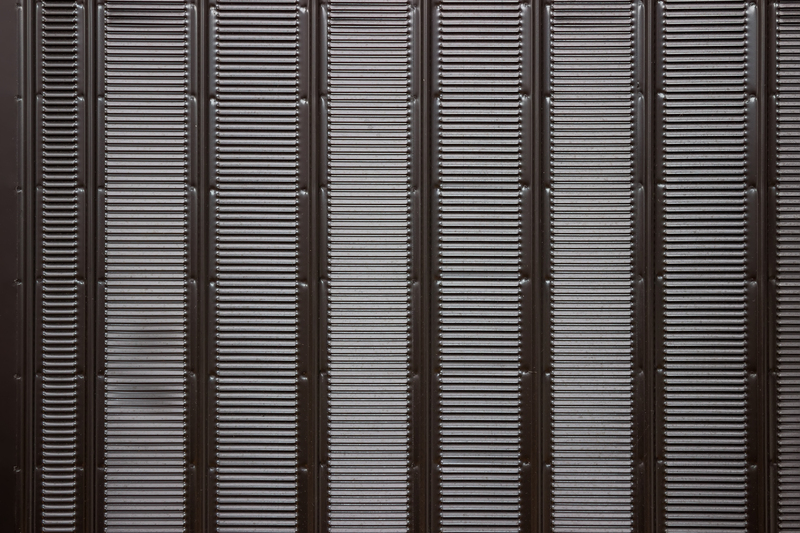Cleaning at Home: Can We Go Chemical-Free?
Posted on 07/02/2025
In a world where sustainability and eco-friendliness are becoming increasingly important, many people are turning their attention to the products they use in their daily lives. One of the prominent areas of focus is home cleaning, which often involves numerous chemical-based products. But is it really possible to maintain a clean home without relying on these chemicals? This article explores the possibilities and methods for chemical-free cleaning.
The Case Against Chemical Cleaners
Chemical-based cleaners may be effective at eliminating germs and dirt, but they often come with a host of downsides. Many household cleaning products contain substances that can be harmful to both human health and the environment. For example, some common cleaning agents have been linked to respiratory issues, skin irritations, and even long-term health problems like cancer.
Moreover, chemical cleaners frequently contribute to pollution when they are washed down the drains, ending up in rivers, lakes, and oceans. This pollution can harm aquatic life and disrupt ecosystems. So, the question arises: can we maintain a clean, healthy home without relying on chemical cleaners?

Natural Alternatives to Chemical Cleaners
Fortunately, there are many natural alternatives that can be just as effective, if not more so, than their chemical counterparts. Here are some common natural cleaning agents and their uses:
1. Vinegar: Known for its acidity, vinegar is excellent for cutting through grease and disinfecting surfaces. A mixture of one part vinegar to one part water can clean countertops, floors, and even bathroom fixtures.
2. Baking Soda: This versatile powder can act as a mild abrasive, perfect for scrubbing away stubborn stains. It also neutralizes odors, making it ideal for use in refrigerators, carpets, and garbage disposals.
3. Lemon Juice: The citric acid in lemon juice provides powerful antibacterial properties. Lemon juice can be used to sanitize cutting boards, freshen up the microwave, and even polish metal.
4. Essential Oils: Oils like tea tree, lavender, and eucalyptus offer natural antibacterial and antifungal properties. They can be added to DIY cleaning solutions for an aromatic and effective boost.
DIY Recipes for Natural Cleaning Solutions
Creating your own cleaning solutions at home can be simple and cost-effective. Here are a few recipes to get you started:
1. All-Purpose Cleaner:
- 1 cup water
- 1 cup vinegar
- 10-15 drops of essential oil (e.g., lavender, tea tree)
Mix ingredients in a spray bottle and use on countertops, sinks, and other surfaces.
2. Scrubbing Paste:
- 3/4 cup baking soda
- 1/4 cup castile soap
- 1 tablespoon water
- 10 drops essential oil (optional)
Combine ingredients to form a paste and use for cleaning tubs, sinks, and other dirty surfaces.
3. Glass Cleaner:
- 1 cup water
- 1 cup vinegar
- 1 tablespoon cornstarch
Mix in a spray bottle and use to clean windows and mirrors.
Pros and Cons of Chemical-Free Cleaning
Choosing to go chemical-free in your home cleaning comes with its own set of advantages and drawbacks. Here's a comprehensive look at the pros and cons:
Pros
- Healthier Home Environment: Reducing chemicals lowers the risk of respiratory issues, allergies, and skin irritations.
- Eco-Friendly: Natural ingredients are biodegradable and less harmful to waterways and ecosystems.
- Cost-Effective: Many natural cleaners, like vinegar and baking soda, are inexpensive and multi-purpose.
- Sustainable: Using fewer chemicals contributes to a more sustainable lifestyle.
Cons
- Time-Consuming: DIY solutions require preparation time.
- Less Convenient: Chemical cleaners are usually ready to use, whereas natural alternatives may need to be mixed.
- Effectiveness: While natural cleaners are effective for many tasks, they may not tackle the toughest jobs as efficiently as chemical options.
Tips for a Chemical-Free Cleaning Routine
1. Start Small: Transitioning to chemical-free cleaning doesn't have to happen overnight. Start by replacing one or two products at a time.
2. Stay Informed: Research natural alternatives and their specific uses to ensure you're getting the best results.
3. Read Labels: Some products marketed as "natural" or "eco-friendly" may still contain harmful chemicals. Always read the ingredient list.
4. Use Proper Tools: Microfiber cloths, scrub brushes, and reusable sponges can enhance the effectiveness of natural cleaning solutions.

Takeaways
- Chemical-free cleaning is not only possible but can be highly effective.
- Natural cleaning agents like vinegar, baking soda, and lemon juice can replace many chemical-based cleaners.
- DIY cleaning solutions are easy to prepare and often more cost-effective.
- Going chemical-free offers significant benefits for your health and the environment.
- Transitioning to a chemical-free cleaning routine requires some effort but is highly rewarding.
Conclusion
In conclusion, cleaning your home without chemicals is not only feasible but also beneficial for your health and the environment. By making use of readily available natural ingredients and taking the time to prepare your own cleaning solutions, you can maintain a clean and safe home. Despite some minor inconveniences, the pros vastly outweigh the cons. With a bit of effort and commitment, cleaning chemical-free can become a practical and rewarding part of your daily routine.




